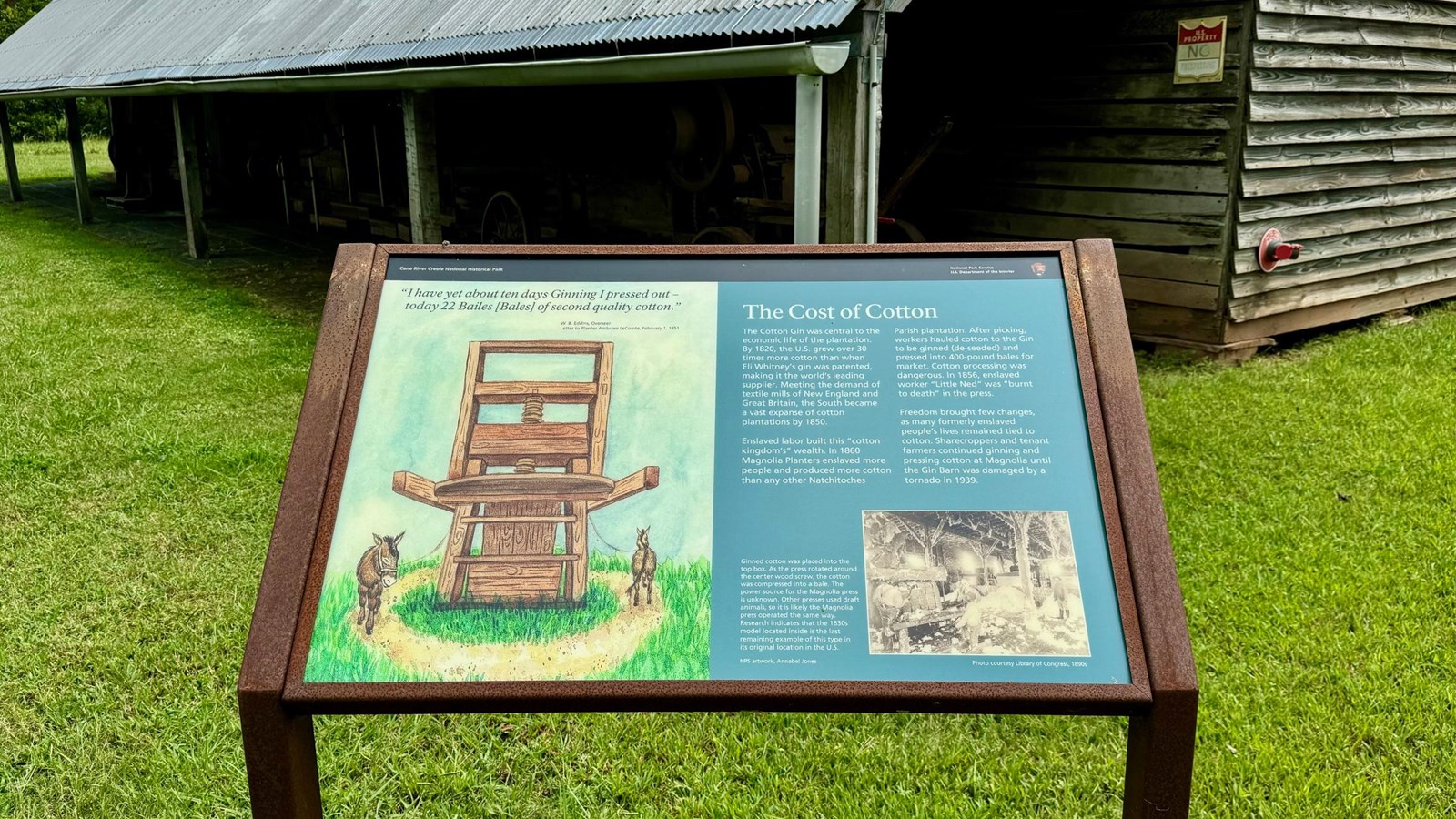Last updated: September 20, 2024
Place
The Cost of Cotton

Christy Hoover
Quick Facts
Location:
Natchez, LA
Amenities
1 listed
Historical/Interpretive Information/Exhibits
The Cotton Gin was central to the economic life of the plantation. By 1820, the U.S. grew over 30 times more cotton than when Eli Whitney's gin was patented, making it the world's leading supplier. Meeting the demand of textile mills of New England and Great Britain, the South became a vast expanse of cotton plantations by 1850.
Enslaved labor built this "cotton kingdom's" wealth. In 1860, Magnolia Planters enslaved more people and produced more cotton than any other Natchitoches Parish plantation. After picking, workers hauled cotton to the Gin to be ginned (de-seeded) and pressed into 400-pound bales for market. Cotton processing was dangerous. In 1856, enslaved worker "Little Ned" was "burnt to death" in the press.
Freedom brought few changes, as many formerly enslaved people's lives remaint tied to cotton. Sharecroppers and tenant farmers continued ginning and pressing cotton at Magnolia until the Gin Barn was damaged by a tornado in 1939.
Ginned cotton was placed into the top box. As the press rotated around the center wood screw, the cotton was compressed into a bale. The power source for the Magnolia press is unknown. Other presses used draft animals, so it is likely the Magnolia press operated the same way. Research indicates that the 1830s model located inside is the last remaining example of this type in its original location in the U.S.
"I have yet about ten days Ginning I pressed out - today 22 Bailes [Bales] of second quality cotton" W.B. Eddins, Overseer, Letter to Planter Ambrose LeComte, February 1, 1851
Enslaved labor built this "cotton kingdom's" wealth. In 1860, Magnolia Planters enslaved more people and produced more cotton than any other Natchitoches Parish plantation. After picking, workers hauled cotton to the Gin to be ginned (de-seeded) and pressed into 400-pound bales for market. Cotton processing was dangerous. In 1856, enslaved worker "Little Ned" was "burnt to death" in the press.
Freedom brought few changes, as many formerly enslaved people's lives remaint tied to cotton. Sharecroppers and tenant farmers continued ginning and pressing cotton at Magnolia until the Gin Barn was damaged by a tornado in 1939.
Ginned cotton was placed into the top box. As the press rotated around the center wood screw, the cotton was compressed into a bale. The power source for the Magnolia press is unknown. Other presses used draft animals, so it is likely the Magnolia press operated the same way. Research indicates that the 1830s model located inside is the last remaining example of this type in its original location in the U.S.
"I have yet about ten days Ginning I pressed out - today 22 Bailes [Bales] of second quality cotton" W.B. Eddins, Overseer, Letter to Planter Ambrose LeComte, February 1, 1851
